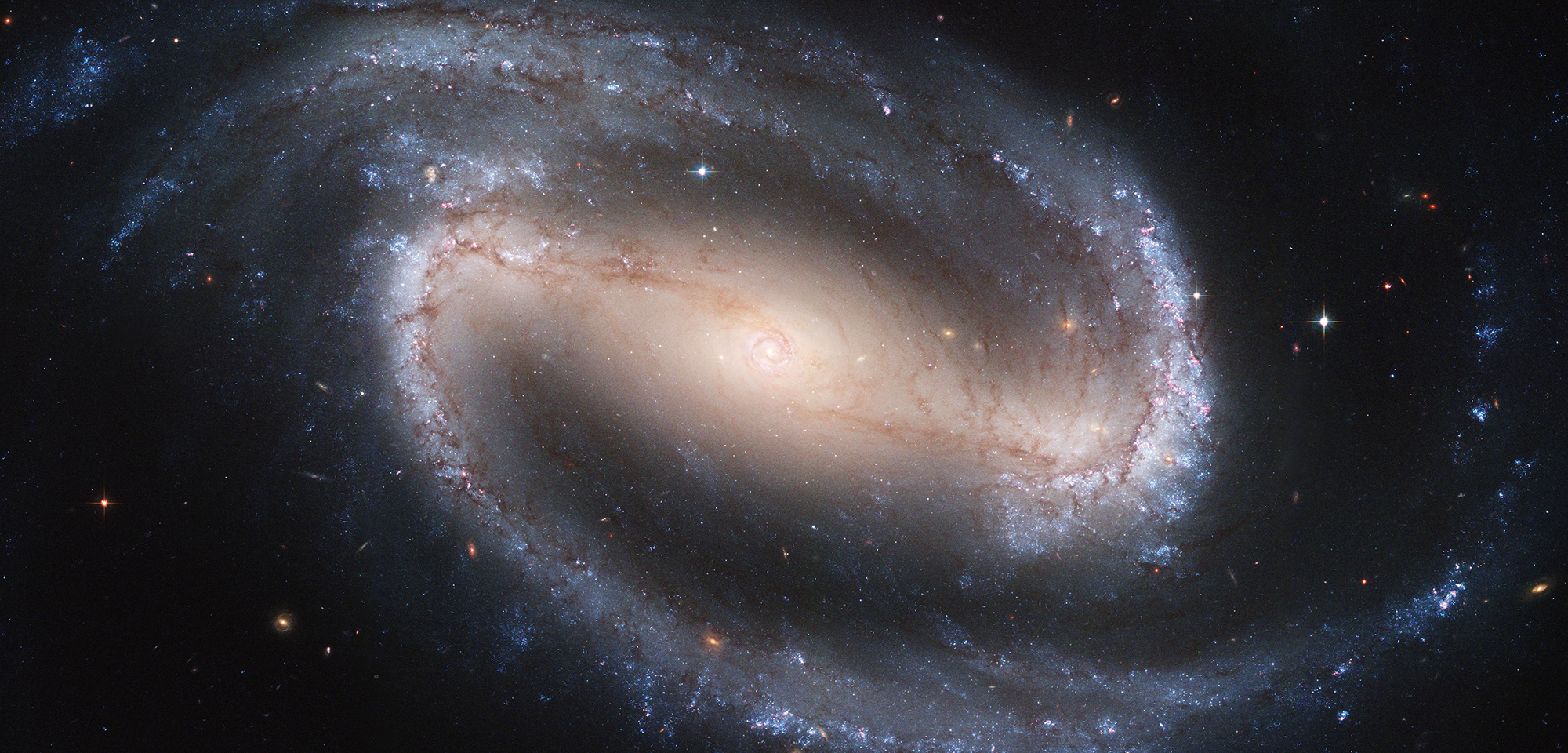1 min read
Spiral Galaxy NGC 1300

Bold and beautiful, NGC 1300 is a marvelous example of a barred spiral galaxy. Unlike in other spiral galaxies where the starry arms curl outward from the center of the galaxy, NGC 1300's arms twist away from the ends of a straight bar of stars that stretches across the galaxy's core. Observational evidence suggests that our own galaxy, the Milky Way, is a barred spiral as well.
NGC 1300's spiral arms include blue clusters of young stars, pink clouds that are forming new stars, and dark lanes of dust. Two prominent dust lanes also cut through the galaxy's bar, which contains mostly older, orangish stars. These dust lanes disappear into a tight spiral feature at the center of the bar. Interestingly, only galaxies with large bars appear to have such a "spiral within a spiral." Hubble's image of NGC 1300, taken with the Advanced Camera for Surveys, reveals finer details in these features than ever seen before.
Using Hubble to study more than 2,000 spiral galaxies both near and far, astronomers have learned that barred spiral galaxies are more common today than they were in the past. Led by Kartik Sheth of the Spitzer Science Center at the California Institute of Technology, the team found that 65 percent of present-day spiral galaxies have bars, but 7 billion years ago, only 20 percent of spirals had them. The researchers also noticed that the percentage of massive spiral galaxies that have bars was about the same in the past as it is today, but for low-mass spirals, more present-day galaxies have bars than the earlier ones do.
Galaxies take time to mature, so today's galaxies are typically more developed than those from billions of years ago. Astronomers also know that larger, more massive galaxies tend to develop faster — and thus earlier — than smaller, less massive galaxies do. The findings, therefore, imply that bars are a sign of maturity among spiral galaxies.
Constellation: Eridanus
Distance: 69 million light-years (21 megaparsecs)
Instrument: Advanced Camera for Surveys/WFC
Image Filters: F435W (B), F555W (V), F814W (I), F658N (H-alpha)
- Object NameObject NameA name or catalog number that astronomers use to identify an astronomical object.NGC 1300
- Release DateJanuary 10, 2005
- Credit
Share
Details
Claire Andreoli
NASA’s Goddard Space Flight Center
Greenbelt, Maryland
claire.andreoli@nasa.gov






























